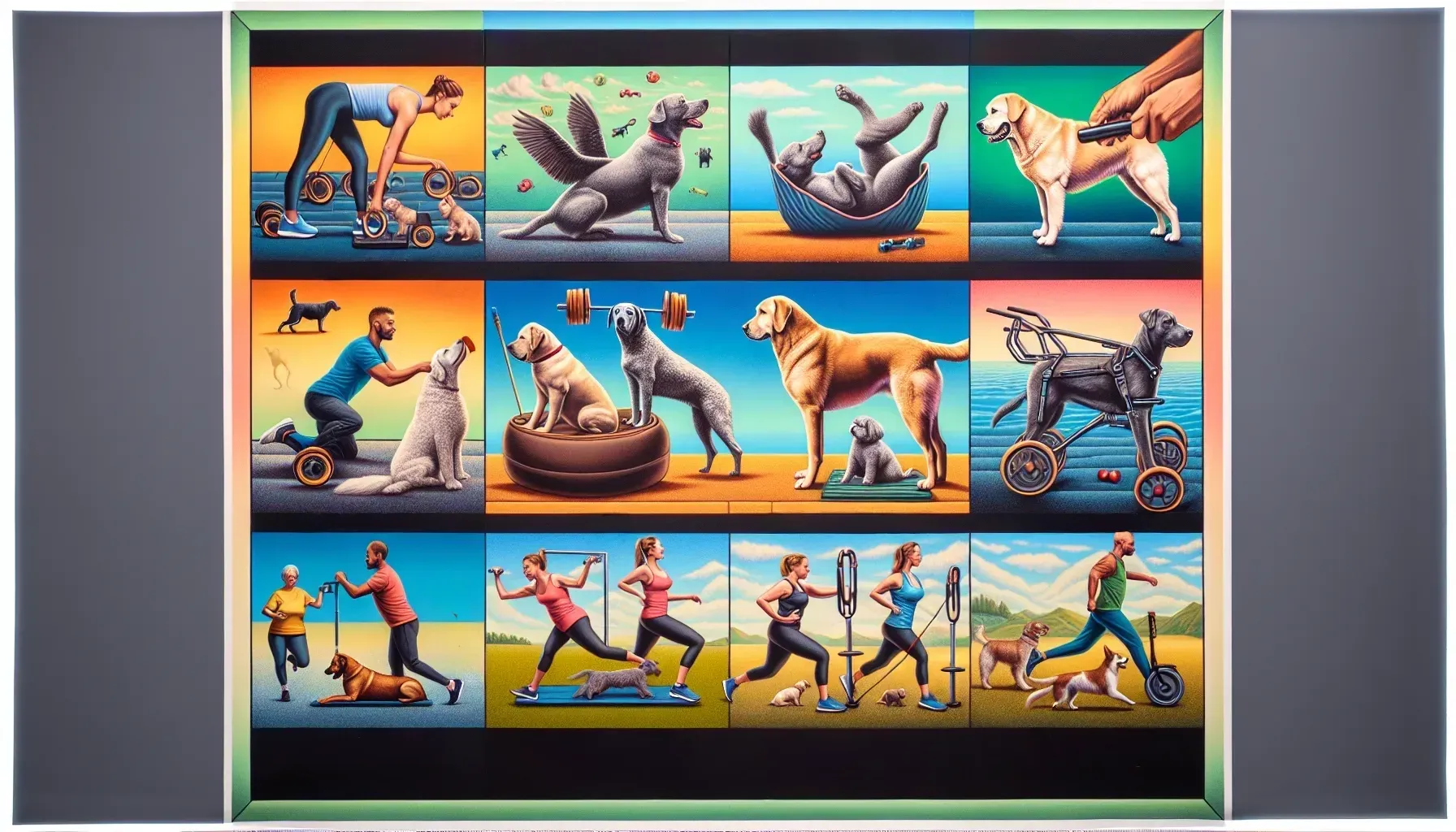Inclusive Canine Fitness: Customized Exercise Regimens for Dogs of All Abilities

Tailoring Exercise to Individual Needs
The foundation of a successful dog fitness plan lies in acknowledging and catering to individual needs. Whether your dog is a sprightly terrier with energy to burn or a dignified great dane who prefers leisurely strolls, recognizing their breed-specific traits is the first step. Younger dogs generally have more energy and might require more vigorous daily exercise compared to older dogs who may benefit from shorter, less strenuous activities.
For instance, breeds known for their athleticism like border collies or Australian shepherds would relish opportunities for longer runs or interactive games that challenge them both physically and mentally. Conversely, brachycephalic breeds (dogs with short noses like pugs or bulldogs) might be more suited to short walks in cool weather to prevent overexertion.
Engaging in activities that suit your dog's inherent traits not only ensures their physical well-being but also bolsters their mental health. It's important to ramp up the exercise intensity gradually to avoid injuries, especially in puppies or dogs that aren't used to regular physical activity.
Modifying Workouts for Aging or Injured Dogs
As our beloved canine companions enter their golden years or if they're recovering from an injury, their exercise regime needs thoughtful adjustments. Aging dogs might not express the same enthusiasm for long walks or high-impact play as they once did. Introducing low-impact activities such as leisurely walks on soft terrain helps maintain their muscle tone while minimizing stress on aging joints.
Similarly, for injured dogs recuperating from surgeries or dealing with chronic conditions like hip dysplasia, tailored rehabilitation exercises prescribed by a qualified veterinarian can significantly enhance their recovery process. Employing gentle stretching exercises can improve flexibility and prevent muscle atrophy in dogs restricted from regular exercise due to health issues.
Engaging Overweight Dogs in Low-Impact Activities
The predicament of managing an overweight dog is increasingly common among pet owners. The key to a successful weight loss journey is combining dietary adjustments with a tailor-made exercise regimen that avoids undue strain on the dog's joints. "Tails' Talks" advocates for introducing overweight pets to swimming - an excellent form of cardiovascular workout that supports weight management while being gentle on the joints.
Aquatic therapy sessions under professional supervision can significantly accentuate the benefits of regular swimming. Additionally, incremental increases in walking durations coupled with interactive play sessions can contribute positively to an overweight dog's path back to a healthy weight range.
Incorporating Mental Stimulation in Physical Exercise
The mantra at "Tails' Talks" emphasizes balancing physical exertion with mental agility. Brain games and training exercises infuse variety into your dog's routine while keeping them mentally sharp. Puzzle feeders stimulate problem-solving skills; obedience training solidifies your bond and reinforces positive behavior; scent work activates their primal instinct and provides immense satisfaction upon completion.
Integrating these elements into your dog’s daily routine not only enriches their life but also fosters a deeper connection between you and your pet. Sessions interspersed with rewards ensure that exercise remains a source of joy rather than a chore.
Adapting Routines for Canines with Mobility Challenges
For dogs facing hurdles like arthritis or recovering from an injury, it's imperative to tailor exercises that accommodate their mobility restrictions. Encouraging movement without exacerbating existing conditions is crucial. Here at "Tails' Talks", we believe in harnessing the therapeutic effects of hydrotherapy - leveraging the buoyancy of water offers pain relief and aids in improving mobility for canines struggling with joint issues.
Innovative use of assistive devices such as harnesses and wheelchairs can empower your dog to move more freely and safely explore their surroundings. Gentle massage techniques could also complement physical exercises by enhancing circulation and alleviating discomfort.
Frequently Asked Questions
When tailoring exercise for your dog, consider their breed, age, energy level, and health status. Younger dogs typically require more vigorous activities, while older or injured dogs benefit from low-impact exercises. Understanding these factors ensures that the exercise regimen is both safe and enjoyable for your pet.
To modify workouts for an aging dog, focus on low-impact activities like gentle walks on soft terrain. These exercises help maintain muscle tone while reducing stress on joints. Additionally, consider incorporating stretching exercises to improve flexibility and prevent muscle atrophy during their golden years.
Effective low-impact activities for overweight dogs include swimming and controlled walking sessions. Swimming provides a great cardiovascular workout without stressing the joints. Gradually increasing walking durations and incorporating interactive play can also help manage weight while ensuring your dog remains active and engaged.
Incorporating mental stimulation into your dog's exercise routine can be achieved through brain games, puzzle feeders, and obedience training. These activities not only keep your dog mentally sharp but also strengthen your bond. Mixing physical exercise with mental challenges ensures a well-rounded approach to their overall well-being.
If your dog has mobility challenges, it's essential to adapt their exercise routine accordingly. Gentle movements, hydrotherapy, and the use of assistive devices like harnesses or wheelchairs can enhance mobility. Additionally, gentle massage techniques may help improve circulation and alleviate discomfort during physical activity.
Tailoring exercise regimens for different dog breeds is crucial because each breed has unique energy levels, physical capabilities, and health considerations. For instance, active breeds may thrive on vigorous activities, while brachycephalic breeds require gentler exercises to avoid overexertion. Customizing routines promotes better health and happiness.
Yes, combining physical and mental exercises for your dog is highly beneficial. Engaging them in both types of activities keeps them physically fit while stimulating their minds. Activities like scent work or training sessions can complement walks or playtime, leading to a more balanced and fulfilling routine.
You can determine if your dog's exercise routine is effective by observing their energy levels, weight management, and overall health. A well-balanced routine should leave your dog content but not overly fatigued. Regular veterinary check-ups can also help assess their fitness progress and adjust the regimen as needed.






